We will strictly sample to ensure that the sample can represent the entire batch of goods and use a tensile force of 3 times the safety factor for destructive testing. The quality of the goods can be guaranteed to the greatest extent.

Wavy tail anchor is made of high performance steel pipe and rebar extrusion after bending. Its SWL range is between 0.5 to 8.0 tons. There are two thread standards, M and RD. It needs to undergo strict sampling inspection before leaving the factory to ensure that it can pass the destructive test of 3 times safety factor. Its international general standard is CE. HULK Metal is an experienced supplier in China and can provide you with higher quality and cheaper wavy tail anchor.






3 times Safety Factor Destructive Test
M12 to M42 Specifications
Better Prices
CE & ISO 9001 Certified
HULK Metal has produced hundreds of thousands of wavy tail anchors and sold them all over the world. We have a complete supply chain and a professional team to provide more thoughtful services, helping you complete your procurement tasks more easily.
We currently offer two types of wavy tail anchors: short and long. The difference between them is the distance from the extrusion point to the wavy tail. You can see their specific sizes in the table below. You can directly tell us the specific model and quantity. We will provide a better quotation.
| Name | Long Wavy Tail Anchor | |||||
| Drawings |  | |||||
| Material | Stainless Steel / Q345 / Q235 / 20# / Customizable | |||||
| Surface Treatment | Raw Color, Electro-galvanized, Hot-dip Galvanized | |||||
| Safety Factor | ≥ 3 | |||||
| Certification | CE / ISO 9001 | |||||
| SWL (tons) | CODE | THREAD(RD/M) | H(mm) | D(mm) | E(mm) | DS(mm) |
| 0.5 | LWS-M/RD12-105 | 12 | 137 | 15 | 22 | 8 |
| 1.2 | LWS-M/RD16-165 | 16 | 216 | 21 | 27 | 12 |
| 2.0 | LWS-M/RD20-195 | 20 | 257 | 27 | 35 | 14 |
| 2.5 | LWS-M/RD24-240 | 24 | 360 | 31 | 43 | 16 |
| 4.0 | LWS-M/RD30-300 | 30 | 450 | 40 | 56 | 20 |
| 6.3 | LWS-M/RD36-380 | 36 | 570 | 47 | 68 | 25 |
| 8.0 | LWS-M/RD42-450 | 42 | 620 | 54 | 80 | 28 |
| Name | Short Wavy Tail Anchor | |||||
| Drawings |  | |||||
| Material | Stainless Steel / Q345 / Q235 / 20# / Customizable | |||||
| Surface Treatment | Raw Color, Electro-galvanized, Hot-dip Galvanized | |||||
| Safety Factor | ≥ 3 | |||||
| Certification | CE / ISO 9001 | |||||
| SWL (tons) | CODE | THREAD(RD/M) | H(mm) | D(mm) | E(mm) | DS(mm) |
| 0.5 | SWS-M/RD12-105 | 12 | 105 | 15 | 22 | 8 |
| 1.2 | SWS-M/RD16-165 | 16 | 165 | 21 | 27 | 12 |
| 2.0 | SWS-M/RD20-195 | 20 | 195 | 27 | 35 | 14 |
| 2.5 | SWS-M/RD24-240 | 24 | 240 | 31 | 43 | 16 |
| 4.0 | SWS-M/RD30-300 | 30 | 300 | 40 | 56 | 20 |
| 6.3 | SWS-M/RD36-380 | 36 | 380 | 47 | 68 | 25 |
| 8.0 | SWS-M/RD42-450 | 42 | 450 | 54 | 80 | 28 |
We will explain everything about it here. So you can know why our prices are much higher than some of our competitors. But they are much cheaper for the same quality products.
Wavy tail anchor is an accessory designed to be placed in precast concrete elements to provide a lifting point or anchor point, also known as wavy tail lifting insert (socket). It plays an important role in the lifting, transportation and installation of precast concrete elements.
It has two parts in terms of material: one is the rebar that is bent into a wavy shape, and the other is the socket (insert) with internal threads. The two are connected after being extruded by an extruder. The extruded part can be used as the third part, the neck or shank.
The threads of the sockets are tapped and surface treated before assembly, and then assembled with the rebar in the extruder. The openings need to be blocked during pouring to prevent concrete from pouring back into them. Lifting hoist rings or lifting loops are required for hoisting. There are three types of materials: stainless steel, carbon steel and alloy steel.
The structure that connects the socket and rebar is made by using a special extruder. It transfers the load on the socket to the rebar and then to the entire system.
It is a rebar that is pre-bent into a wavy shape, and the part that connects to the socket is straight. The material is generally HRD 400. It will be deeply embedded in the precast concrete elements to evenly transfer the stress to the entire element and achieve better mechanical interlocking to enhance the pull-out resistance. The wavy structure increases the stress transfer and resistance area with the element. It can better ensure the stability of the element.
It can be divided into long one and short one according to the length of Wavy Tail Rebar. The difference between the two is that one is long and the other is short to connect to the socket, and the application scenarios are also slightly different.
Its rebar is longer and can be buried deeper. You can click to enter the details to learn more.
Its rebar is shorter. The title is a link to its details page, you can click to enter and learn more.
Some manufacturers use scrap materials to produce Wavy Tail Anchor, and the cost of scrap materials is only half of the batch raw materials.
The advantage of raw materials is that the material composition is certain and the performance is stable. The quality of the whole batch of goods will be consistent.
The disadvantage of scrap materials is that the material type is uncertain and the quality of the whole batch of goods is uneven.
We will strictly check the load performance.
We dare to disclose the quality inspection details.
The work of wavy tail anchor is mainly divided into three parts: pre-setting, hoisting and anchoring.
Each precast concrete element requires several wavy tail anchors, and where to place them needs to be strictly calculated. This process needs to be handled by a professional company, such as HALFEN, LEVIAT, etc., which have such capabilities. Use plastic plugs or magnets for sockets to fix the wavy tail anchors in a specific position and then pour concrete. After the concrete solidifies, remove the plugs and use it.
Use lifting loops or hoist rings screwed into sockets to connect lifting equipment to complete the lifting and transportation of precast concrete elements. The lifting stress will be transferred along the rebar to the deep of the element, preventing breakage and damage.
It can provide thread points for connecting other parts.
Its production is mainly divided into three parts: bending, extrusion and tapping.
1. Cutting, cutting the steel pipe and rebar into specific lengths;
2. Bend the tail of the rebar into a wavy shape in a bending machine, and tap the steel pipe;
3. Surface treatment of sockets;
4. Put the steel pipe on the rebar and put it in a special extruder, and complete the connection between the two after extrusion;
We mainly inspect the load performance, overall length and thread of wavy tail anchor raw materials and finished products. If you want to see other test data, you can make a request. Our quality control center is equipped with advanced instruments. If it is not possible, we will ask SGS, TUV and other third-party companies to assist in the inspection.
We will strictly sample to ensure that the sample can represent the entire batch of goods and use a tensile force of 3 times the safety factor for destructive testing. The quality of the goods can be guaranteed to the greatest extent.
We will strictly measure the total length of the wavy tail anchor. Other dimensional measurements will also be strictly carried out.
We have a complete set of go and no-go gauges that can be used to inspect various threads, and we will also employ a more rigorous method for thread inspection.
Raw materials will be strictly inspected before they are put into production, and they will only be officially used after they are confirmed to meet production requirements. We will provide a detailed material list.
Our advanced production equipment allows us to quickly complete the production, surface treatment, and quality inspection of our Wavy Tail Anchors. Click the link below to visit our factory and learn more. You can also contact us directly, visit us in China, or learn more through live streaming.
The automatic feeding machine can cut steel pipes and rebars into billets of uniform length. The advanced bending machine can quickly bend the tail of the rebar. The automatic tapping machine can automatically fill in the steel pipe and push the steel pipe out after tapping. The special extruder can evenly squeeze the galvanized steel pipe and rebar together.
Our quality inspection center has advanced instruments such as tensile testing machines, go and no-go gauges, vernier calipers, salt spray testing machines, electron microscopes, photometers, etc. We can complete the raw material composition, internal structure, size, tensile properties, corrosion resistance, oxidation resistance of wavy tail anchors, etc. We will provide a detailed inspection report.
Closely cooperated surface treatment factories can complete higher quality electro-galvanizing and hot-dip galvanizing, and we can also provide chromate passivation services. We have advanced testing equipment for surface treatment, which can simulate the use environment of the wavy tail anchor to complete the surface corrosion resistance and oxidation resistance test.
From 2024 to now, we have produced hundreds of thousands of wavy tail anchors. To provide better services, we continue to expand the scale of production while ensuring quality and form a professional team to handle all matters related to your orders in China. Choosing HULK Metal, you will: From 2024 to now, we have produced hundreds of thousands of wavy tail anchors. To provide better services, we continue to expand the scale of production while ensuring quality and form a professional team to handle all matters related to your orders in China. Choosing HULK Metal, you will:

We will respond to your needs quickly and provide faster quotes through optimized quotation strategies. Engineers can speed up production plans. Once you place an order, our factory will promptly arrange raw materials, production equipment, and employees to expedite the entire process. The delivery date of the entire order will be much faster than scheduled. This leaves us enough time to review the order quality and help you identify a better freight company. Therefore, you can rest assured that the goods will only be delivered to you in advance.

In addition to wavy tail anchors, we also provide a variety of lifting inserts, lifting loops, lifting hoist rings, etc. Contact us and you can get quotes for multiple products at one time. We have a complete supply chain and a professional team to handle your order information. One-stop shopping is easier and more convenient.

You will receive a Chinese office to handle all matters related to the order. We will do our best to let you join the production even if you don't come to China. The sales manager will lead a whole team to solve all your problems, and any questions you have will receive the most positive response. With us, you can save more time and energy to handle more matters.

The price is absolutely unmatched among products of the same quality. The advantage is due to our integrated and perfect supply chain. Purchasing raw materials in bulk can lead to lower prices. Advanced production equipment and experienced employees can save more materials and improve production efficiency while ensuring higher consistency. We maintain a close partnership with freight companies to assist you in finding more suitable resources.

We have passed ISO 9001 certification and support live broadcasting to show you the production details of your order. Our wavy tail anchor has passed CE certification. The quality inspection center is equipped with advanced instruments to complete the inspection of tension, size, thread, and other indicators. Strict sampling standards and destructive inspection with a 3x safety factor. We will provide a detailed inspection report.
Here we show the materials, production process, purchase guide, supplier selection suggestions and other articles of wavy tail anchor. If you want to know more, you can also contact us.
Customers often look for the following products while consulting this product. You can click here to learn more.
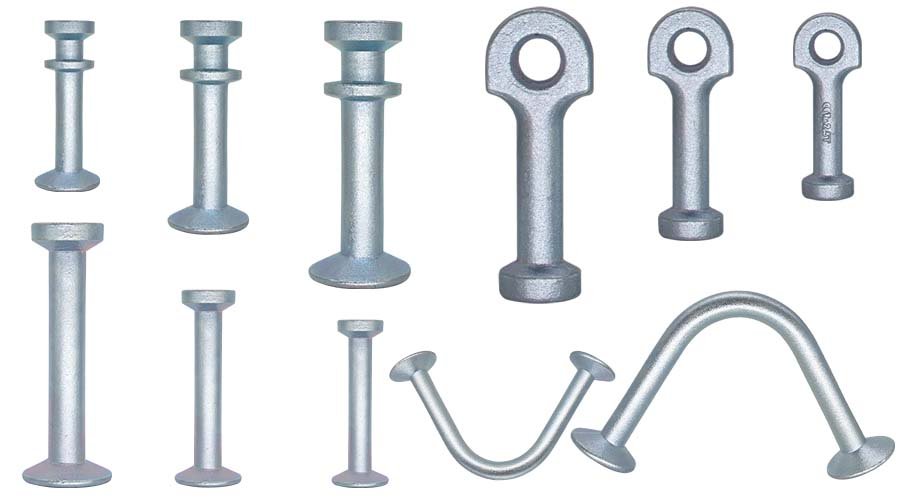
Precast concrete lifting anchors are accessories designed specifically for the lifting of precast concrete elements. It includes lifting pin anchors (as know as dog bone anchors, spherical head lifting anchors), double head lifting anchors, utility anchors, etc. It needs to be embedded in precast concrete elements, fixed with a recess former, and a recess is created in the fixed position to accommodate the lifting clutch. They can be used in many elements such as: concrete trenches, culverts, stairs, pipes, panels, etc.
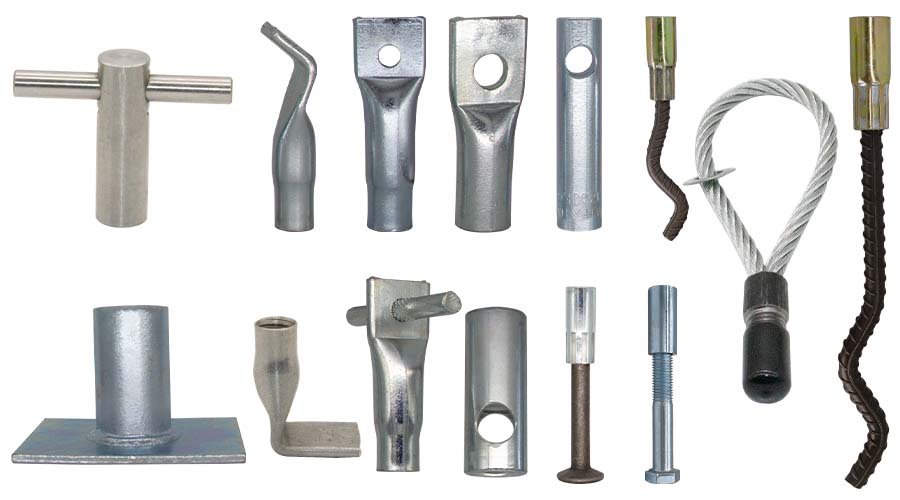
Lifting & Fixing Sockets, also commonly called Lifting & Fixing Inserts, are accessories designed for the lifting and anchoring of precast concrete elements. They are pre-buried in specific locations in the concrete to provide lifting points or connection holes for lifting or connecting other elements. With the development of the quick-install concrete industry, many types have been derived. It generally consists of two parts: a sleeve part and a stress transfer part. Depending on the different stress transfer parts, dozens of products can be derived.
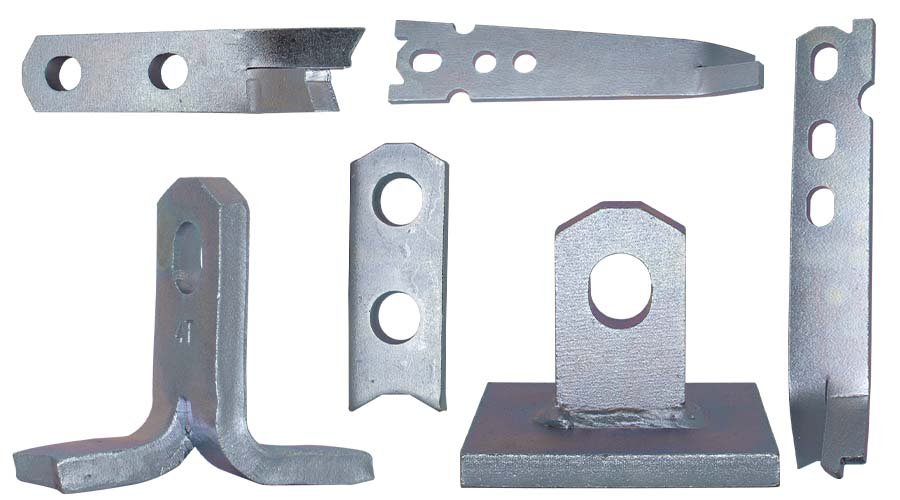
Precast concrete spread anchors are made of high-performance alloy steel plates and are designed to be embedded in precast concrete elements to provide accessories for lifting points. Its international standard is CE certification. It needs to undergo strict tensile performance sampling inspection—using a tensile force of 3 times or even higher safety factor until it is broken. There are many types of it, and when using it, you need to consider the shape, thickness, lifting point location, weight and other factors of the precast concrete elements.
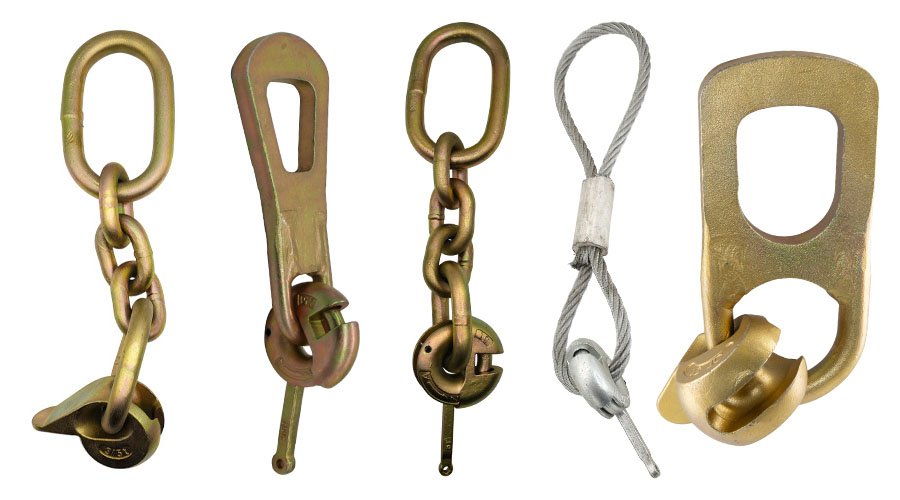
HULK Metal has been engaged in the production and sales of precast concrete lifting clutch since 2006, and has accumulated rich experience. We have integrated a complete supply chain and formed a professional team to provide better products and services. Our lifting clutch has passed the CE certification and can pass the destructive test with a 5-fold safety factor. Here you can learn about our product range, production capacity, and service capabilities.
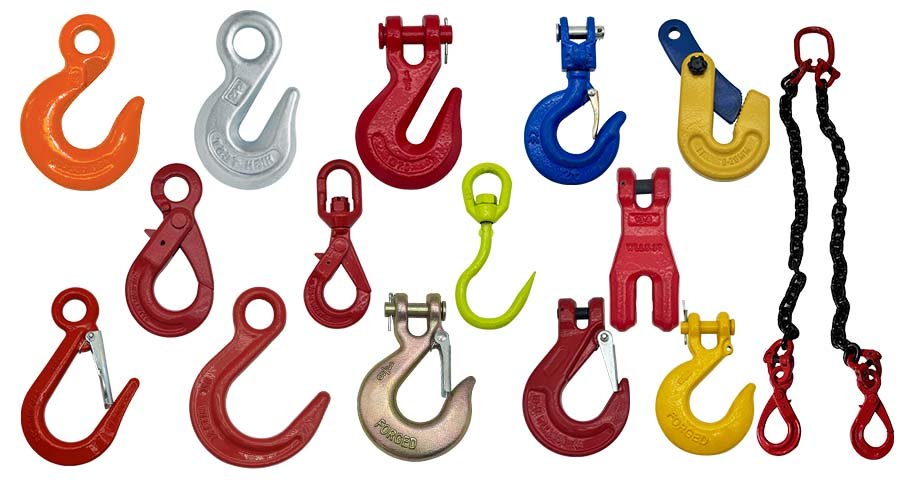
HULK Metal offers a wide range of G60, G70, and G80 strength lifting hooks with a well-established supply chain. We have an advanced forging factory and integrated assembly line production. The quality of lifting hooks will be more guaranteed, and we can provide electro-galvanizing, hot-dip galvanizing, and powder coating—three surface treatments. We strictly implement ISO 9001 standard management to provide you with higher quality products and services. You can contact us at any time to visit the factory to understand our production capacity and service capabilities, and then hand over the order to us after you are satisfied.
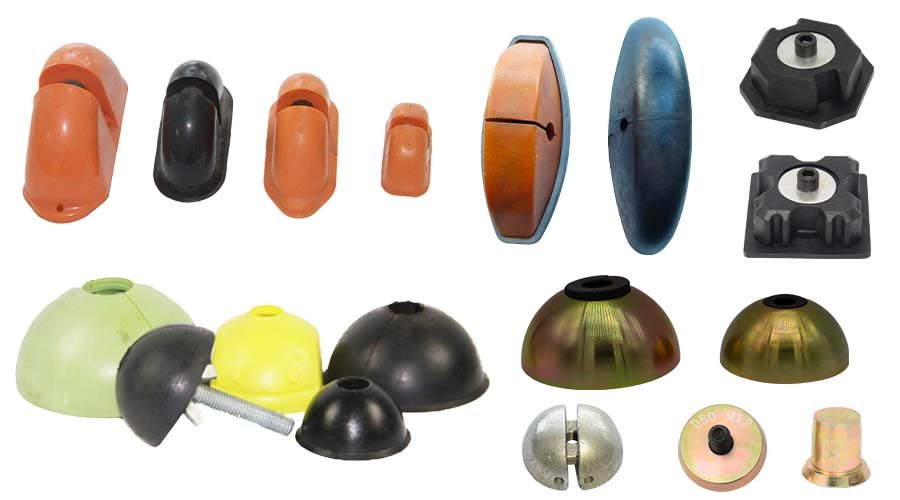
Recess formers are used to place lifting anchors, spread anchors, and other accessories that need to be pre-buried in precast concrete elements. The recess they leave is for the lifting clutch to connect with lifting anchors or spread anchors. We offer a full range of standard recess formers and OEM services for special requirements.
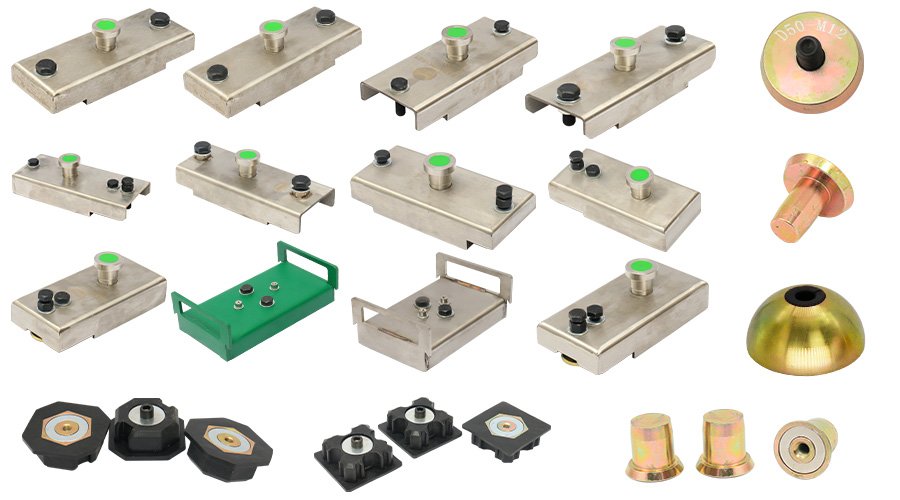
Precast concrete magnets are one of HULK Metal's main products. They are recognized by customers for their high quality and reasonable price. Precast concrete magnets use high-performance and durable NdFeB alloy magnets. Advanced technology effectively improves production efficiency and reduces costs while ensuring its quality. We provide quality assurance services. You can purchase them with confidence.
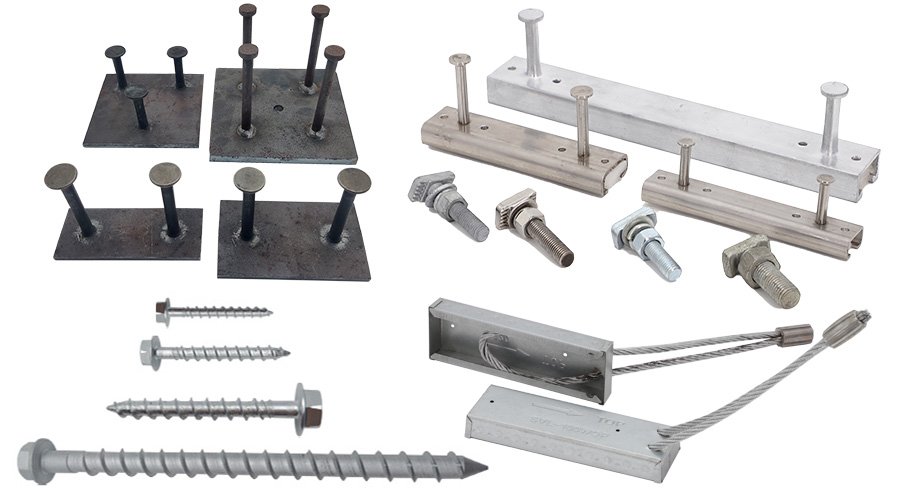
HULK Metal also specializes in OEM services for cast-in-channel, T-bolts, wire rope boxes, stone support brackets, and other accessories. Cast in channel can be made of cold-rolled steel, hot-rolled steel, and stainless steel. T bolts are made of carbon steel, alloy steel, and stainless steel. Our wire rope box only has one wire rope, and stone support brackets only accept OEM services. We will develop a perfect solution according to your requirements to ensure that the delivery time, quality, and price can meet your requirements.
HULK Metal offers high-quality foot anchors designed for secure lifting of precast concrete elements. Our CE and ISO 9001 certified lifting pin anchors ensure a threefold safety factor, shorter production cycles, and prompt delivery.
HULK Metal has supplied tens of millions of Lifting Pin Anchors ranging from 1.3 tons to 32 tons to hundreds of buyers around the world. We have a full range of products and a complete supply chain to provide you with quality services. We provide quality assurance services. Please feel free to inquire.
HULK Metal manufactures lifting pin (dog bone) anchors with higher standards to meet demanding precast concrete lifting needs. We offer complete OEM solutions, from design and production to surface treatment and delivery, ensuring each anchor provides excellent strength, corrosion resistance, and compatibility with various lifting systems.
HULK Metal stands out as a leading manufacturer of lifting eye anchors, specializing in precast concrete lifting eye anchors that meet stringent CE certification with a 3 times safety factor.
Durable precast concrete double head lifting pin anchors from HULK Metal ensure secure lifting, higher safety factors, and corrosion resistance, meeting CE and ISO 9001 standards for demanding construction applications worldwide.
Durable, CE-certified spherical head lifting anchors from HULK Metal offer reliable load capacity and corrosion resistance, ensuring safe, efficient lifting for precast concrete projects with fast delivery and quality assurance.
Lifting Pins for Precast Concrete supplied by HULK Metal are CE certified. We can supply Lifting Pins that can pass the tensile test of 3 times the safety factor and strictly implement the IS0 9001 standard to provide high-quality services.
Short Wavy Tail Anchor is a compact, high-strength lifting solution for precast concrete elements. Its wavy rebar tail ensures even load distribution, prevents concrete cracking, and connects securely with threaded sockets or lifting inserts for safe, efficient operations.
Wavy tail anchor is made of high-performance steel pipe and rebar extrusion after bending. Its SWL range is between 0.5 and 8.0 tons. There are two thread standards, M and RD.
HULK Metal is a well-known supplier in China, providing high-quality and cost-effective Precast Lifting Thread Insert. With a complete supply chain and a professional team, we have provided flat end insert, solid rod insert, Tubular insert and others to global customers. We provide complete QA services. Looking Forward Your Inquiry.
HULK Metal is one of the high-quality Flat End Lifting Insert suppliers in China. In order to provide better services and products, we have integrated a complete supply chain. We strictly implement ISO 9001 management, and after years of development, we can now supply a full range of CE certified Flat End Lifting Insert.
Solid Rod Lifting Inserts supplied by HULK Metal have passed the CE certification. They can pass the tensile test with 3 times the safety factor. We strictly implement ISO 9001 standards to manage the entire supply chain to ensure that we can provide you with better Solid Rod Lifting Inserts and services.
Solid rod lifting and fixing sockets embed into precast concrete for secure threaded connections. Crafted from sturdy steel rods, one end features tapping for attachments, while the other includes a hole for rebar passage, enhancing structural integrity.
The combi lifting socket combines a lifting pin anchor and threaded socket, providing a strong, secure connection for lifting and handling precast concrete elements in construction and infrastructure projects.
HULK Metal's Flat End Fixing Socket with Cross Pin integrates a robust cross bar to improve load stability. Manufactured to CE and ISO 9001 standards, it ensures exceptional strength, corrosion resistance, and reliability for various precast concrete lifting applications.
Fixing sockets with bent ends, also known as fixing inserts with bent ends, is essential for anchoring in precast concrete. These sockets provide robust points for fixing elements, featuring a bent design that enhances grip and stability.
Tubular Lifting Insert supplied by HULK Metal has passed CE certification. Tubular Lifting Insert can pass the 3 times safety factor tensile test, and each batch of goods has a comprehensive test report.
HULK Metal can provide you with RD and M standard 12-45 thread, SWL 0.5 to 8.0tons of Long Wavy Lifting Insert. Its international general standard is CE, which needs to pass the 3 times safety factor tensile force test.
HULK Metal manufactures durable solid rod fixing sockets with cross pins and inserts with cross bars for precast concrete. CE and ISO 9001 certified, with high safety factors and quick delivery for bulk orders.
HULK Metal offers premium flat end lifting sockets designed for safe and efficient handling of precast concrete elements. Manufactured from high-strength alloy steel and certified to CE and ISO 9001 standards, these lifting inserts provide exceptional load capacity and corrosion resistance.
HULK Metal's tubular lifting sockets, made from high-grade steel or stainless steel, provide secure threaded connections in precast concrete. CE certified and precision manufactured, they ensure reliable lifting performance, excellent durability, and meet strict safety requirements for diverse construction applications.
The Long Wavy Lifting Socket combines a threaded steel pipe with a wavy-tail rebar to achieve deeper stress transfer in precast concrete. Designed for heavy-duty lifting, it meets CE and ISO 9001 standards and ensures a 4 times safety factor.
Q345/20#/Stainless steel/Others
Galvanized/Black
8~52
≥3
Flat plate lifting sockets embed into precast concrete for secure lifting points. The design includes a threaded end for clutch attachment and a broad base for load distribution, available in galvanized finishes for added durability.
Flat end fixing sockets, also known as flat end fixing inserts, anchor securely into precast concrete for fixing. Made from sturdy steel, they feature a flat end for easy installation and a threaded interior for bolts.
Plate spread anchors from HULK Metal feature a welded steel plate and head design, embedded in concrete for edge lifting. Available in various sizes with galvanized options, they support loads up to 10 tons safely.
Unilateral erection anchors serve as specialized lifting inserts for precast concrete, designed for one-sided loading during element erection. They integrate with ring clutches and recess formers, providing stable anchor points that enhance safety and reduce panel stress in construction applications.
HULK Metal supplies flat foot anchors crafted from premium alloys for secure lifting in precast concrete projects worldwide.
HULK Metal stands as a reliable erection anchor supplier in China, delivering high-standard products for precast concrete lifting. Our anchors ensure secure handling with superior strength and corrosion resistance, backed by comprehensive production support for bulk orders.
HULK Metal supplies CE and ISO9001 certified spread anchors with reliable safety factors, faster delivery, and professional support. Choose our spread anchors for superior quality and complete precast lifting solutions.
HULK Metal delivers high-quality two-hole anchors, designed for secure lifting of precast concrete elements. Certified with CE and ISO 9001, our anchors ensure safety, durability, and efficiency.
Ring Clutch supplied by HULK Metal is CE certified and can pass the tensile test with a safety factor of 5. We have integrated a complete supply chain and formed a complete team to provide better products and services.
HULK Metal's Precast Concrete Lifting Lugs, also known as Lifting Clutches or Lifting Eyes, are precision-engineered for heavy-duty lifting. Manufactured with high-strength materials, they ensure safety, durability, and efficiency in precast concrete lifting applications worldwide.
High-quality dog bone lifting eye with CE and ISO9001 certification. Strong, safe, and durable for precast concrete lifting. Shorter production cycle and faster delivery from trusted Chinese supplier HULK Metal.
HULK Metal supplies CE and ISO 9001 certified lifting clutch for pin anchor with 5 times safety factors, shorter production cycles, and complete after-sales support for global precast concrete projects.
Dog Bone Lifting Eye With Chain supplied by HULK Metal can pass the 5 times safety factor test and has been CE certified. We can provide 1.3 to 20 tons load groups.
Ring Clutch supplied by HULK Metal is CE certified and can pass the tensile test with a safety factor of 5. We have integrated a complete supply chain and formed a complete team to provide better products and services.
Precast Concrete Lifting Eyes supplied by HULK Metal has passed CE and ISO 9001 Certified and can passed 5 times safety factor testing. HULK Metal is an experienced manufacturer in China. Looking forward your inquire.
Q345/35CrMo/Others
Galvanized/Black/Powder-coat
1.3~32.0
≥5
Precision Casting
HULK Metal has a well-established supply chain to provide you with a full range of Clevis Slip Hooks, such as G43, G70, G80, CE marked, with latch or none, electro-galvanized, hot-dip galvanized or powder coated.
We have provided customers in more than 100 countries and regions around the world with Clevis Grab Hooks with strength standards such as G43 70 80 that can pass 2 to 4 Times Safety Factor detection.
HULK Metal is an experienced eye grab hooks supplier in China. We have integrated a complete supply chain and formed a professional team to provide better products and services. We can provide eye grab hooks with various specifications and surface treatments.
HULK Metal is an experienced supplier in China, providing Eye Slip Hooks in various materials, strengths, certifications, surface treatments and sizes. We have established a complete supply chain to ensure that raw materials, production and delivery are under control to provide higher quality and low-cost lifting hooks.
HULK Metal provides high-quality Rubber Recess Former for precast concrete lifting systems. They are used with Pin Anchor Recess Former and Spread Anchor Recess Former, ensuring precise recess shaping, shorter production cycles, and faster delivery.
HULK Metal supplies durable lifting pin anchor recess former for precast concrete elements, offering sizes from 1.3 to 32 tons with CE and ISO 9001 certification. Get shorter cycles and comprehensive support for bulk orders.
HULK Metal can provide a variety of precast magnetic formers. With higher quality and a more affordable price, it is your best choice.
The Spread Anchor Rubber Recess Former is made of durable rubber with a reinforced rear metal plate. It is designed for fixing spread anchors in precast concrete, ensuring accurate positioning, easy demolding, and reliable lifting performance.
As one of the excellent magnetic recess former suppliers in China, HULK Metal has advanced factories and perfect supply chain to provide you with high-quality products and services.
HULK Metal can provide CE-certified magnets for precast lifting and fixing inserts or sockets. Our factory has advanced machining equipment, laser cutting machines, and assembly lines, which can more efficiently complete CE-certified precast lifting fixing insert socket magnet with a higher pass rate.
HULK Metal's Electrical Box Fixed Magnets feature a durable rubber body combined with strong NdFeB magnets, ensuring reliable fixation of electrical boxes in precast concrete. These magnets are customizable in shape, size, and finish, providing flexibility for bulk orders.
Our Shuttering Magnets for Formwork are designed for precast concrete production, offering reusable and stable fixing solutions. They support different mold sizes and deliver better cost-efficiency for large-scale construction projects.
Our Embedded Corrugated Pipe Fixed Magnet combines premium steel housing with powerful magnets to ensure strong fixation during precast concrete production. It reduces installation time, improves efficiency, and provides consistent performance across different applications, helping customers achieve safer and more reliable concrete elements.
Cast In Channel T Bolts from HULK Metal are precision-forged using high-performance alloy steel or stainless steel. Surface treatments, including electro-galvanizing or hot-dip galvanizing, enhance rust resistance, making them reliable for precast concrete connections in construction and infrastructure projects.
HALFEN Anchor Channels from HULK Metal offer superior quality, CE and ISO certified standards, and five times safety factor. Our fast production and delivery, combined with professional after-sales support, make bulk purchasing simple and reliable.
Name Wire Loop Box Precast Concrete Accessories
Molds Full Range Moulds
Materials Wire Rope / Steel Plate / Customized
SL(mm)±10 60 / 80 / 100 / 120 /140
Our Cast in Channel offers superior strength, certified safety, and flexible application for precast construction. Manufactured with advanced processes, it guarantees durability, easier installation, and faster delivery. HULK Metal supports bulk buyers with full technical service and reliable after-sales support.
Our concrete screw bolts are designed for reliable installation without expansion anchors. Galvanized concrete screws provide superior corrosion resistance, making them ideal for indoor and outdoor use. HULK Metal offers diverse sizes, surface treatments, and customized solutions to match your needs.
Q345/20#/Stainless steel/Others
Galvanized
0.8~25.0
6~32
≥3
HULK Metal lifting loops are made from alloy or carbon steel, precision-threaded, and electro-galvanized for corrosion resistance. Designed for use with lifting sockets, they ensure safe, reliable handling of precast concrete components with a ≥4 safety factor.
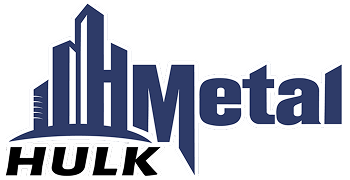
As a top metalworking service provider, we want to let every customer experience a sense of security in purchasing, sales, etc., and better realize their value through continuously defining new standards for products and services.
Room 901, Intelligent Park A Building, No. 86 ChunYang Rd, Qingdao, China 266109
© 2025 HULK Metal All Rights Reserved. All Rights Reserved.








 EN
EN RU
RU